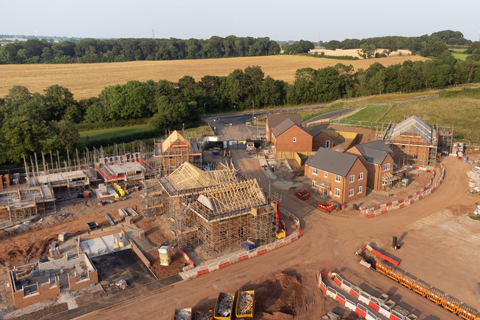No Nonsense Nutrient Neutrality
The WCI Nutrient Neutrality division focus on sourcing, creating and supplying phosphate and nutrient offset credits to the UK development market.
Developers and property owners seeking mitigation schemes for developments subject to phosphate and nutrient neutrality restrictions are able to purchase credits through WCI that are generated through the landmark agreement of upgrading of out-dated & ineffient private systems – benefitting both the community and the enviroment.
Low Cost Phosphate Credits
Large stocks of credits immediately available with flexible terms to align cashflow for developments of all sizes.
NNAMS & Drainage Strategies
Comprehensive NNAMS and sHRA prepared by professional drainage engineers for developments of all sizes.
Septic Tank Upgrades
See if you are eligible for a FREE septic tank/treatment plant upgrade under the landmark WCI Phosphate Offset Scheme.
WCI Nutrient Neutrality serves both Developers and Property Owners alike. Our Phosphate Credit Scheme brings together Developers and Property Owners to deliver sustainable, fair and deliverable phosphate mitigation schemes based on septic tank upgrades. Our Nutrient Neutrality Assessments and Mitigation Strategies (NNAMS) are prepared for Developers either as part of our Phosphate Credit Scheme or as a stand-alone service.
Affected Areas
As of March 2022, 74 LPAs have received advice from Natural England across 27 catchments. This equates to 14% of England’s land area.
If your development lies in, or near, the area shown in the adjacent map of affected LPAs, your development may be required to be nutrient neutral.
Remember, it is not the area covered by the LPA but the specific river catchments which define which developments must be nutrient neutral so if you’re in any doubt about whether your development is affected please give the Nutrient Neutrality team a call.
Speak to a WCI Nutrient Neutrality Advisor: 01984 300 110
From March 2020, Natural England began issuing advice to a number of Local Planning Authorities (LPA) about a European Court of Justice ruling in the landmark ‘Dutch N’ case. The guidance requires new developments which increase occupation of a site to be ‘nutrient neutral’.
This means that new developments must not increase the level of nutrients, and in particular phosphates, to specific internationally protected areas called RAMSARs. As RAMSARs are designated wetlands, they receive nutrients from streams and rivers that flow to them. It is these river catchments which define the areas in which development is subject to the new planning restrictions.
If a development will increase nutrient levels, for example by adding housing or other overnight accommodation, it must have a way of reducing the same amount of nutrients from somewhere else in the catchment. Only by demonstrating this ‘nutrient neutrality’ can developments receive planning approval.



